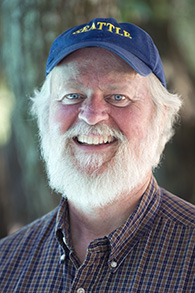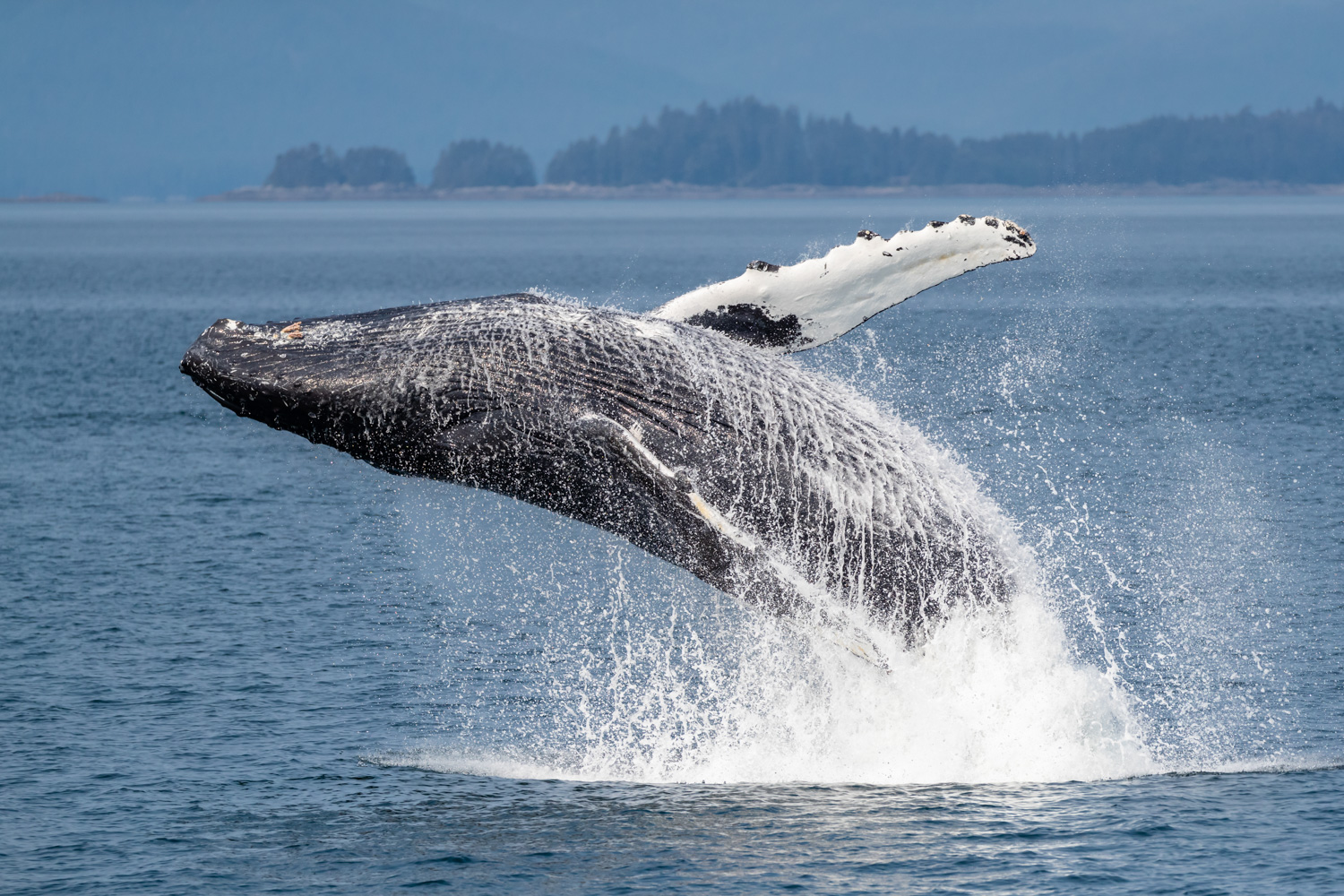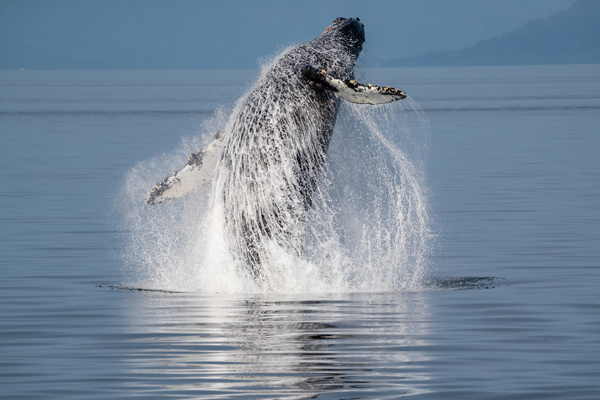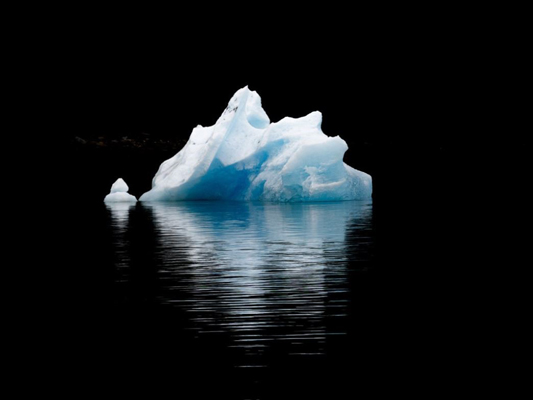Humpback whales have bad breath! I can definitively report that—after numerous “bubble-net” feeding groups of humpbacks surfaced close to our boat while we were down-wind of their moist fishy breath. And when 30 whales surface right beside you, that’s a lot of moist fishy breath!
Spring was late this year in Southeast Alaska. Like so many parts of the country, snow persisted well into March around Sitka. The temperature was very chilly and the close and damp proximity to the ocean, and the wind, made it feel more so. Though some tough Alaskans walked the streets of Sitka without coats, our group stayed bundled up whenever we were outside.

The herring spawn was also late this year. The herring were along the coast in massive numbers—millions of tons—and the whales were greedily gobbling them up. But the developing eggs in most females had not fully matured and weather conditions had also not been suitable to stimulate the spawn. No one is quite sure what conditions accelerate the spawn, but it seemed there were many differing opinions.
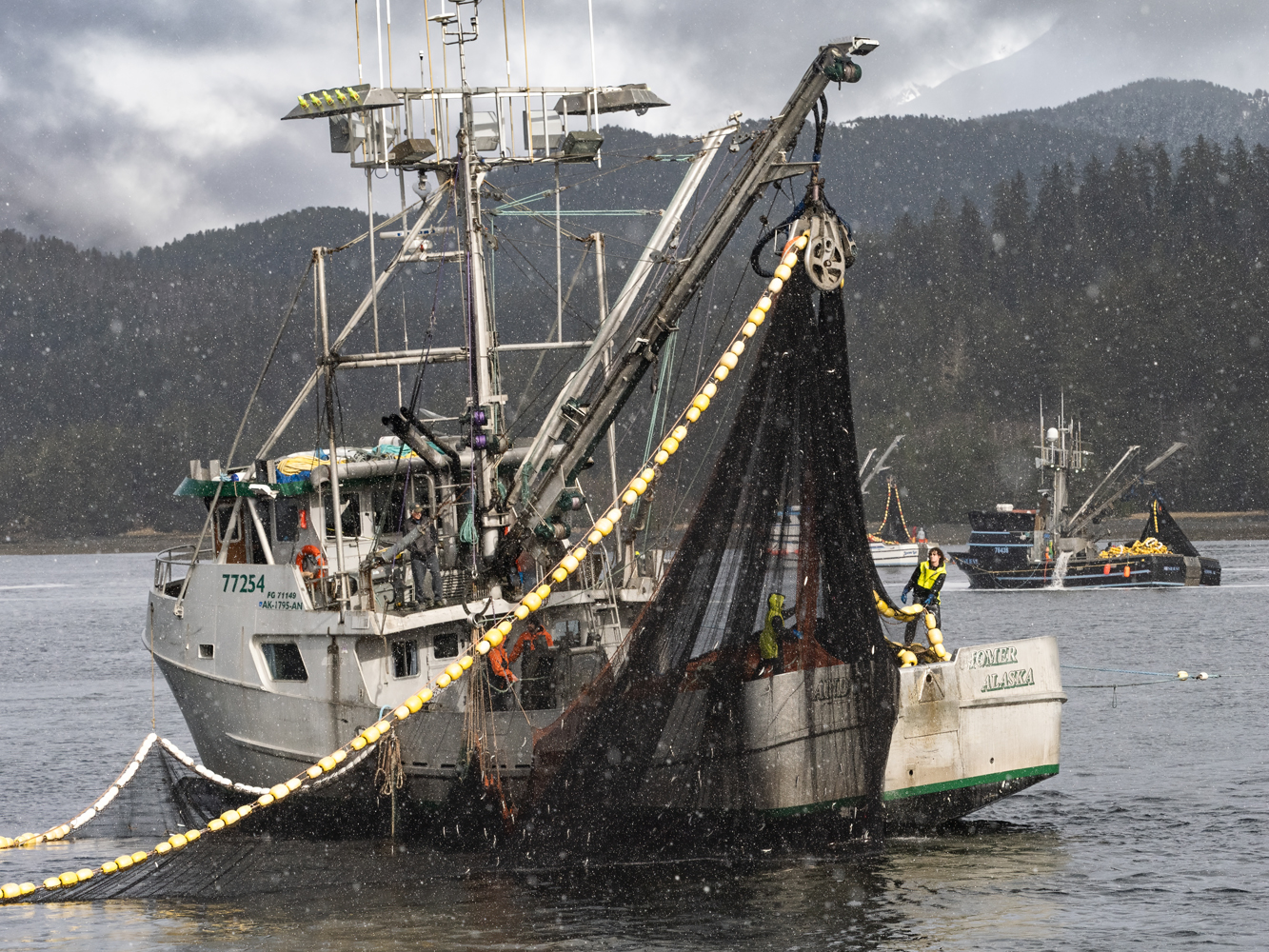
Since the herring in Southeast Alaska is fished almost exclusively to sell the roe to Japan, the immature eggs were not a happy circumstance for the fleet of purse seiners and their tenders. Time and time again we watched the seiners engulf as much as 100 tons of fish only to have them tested and then released when it was determined that the egg skeins in the females had not yet reached a marketable egg density. Near the end of our trip some spawning had just commenced and things were looking up for the fisherman as the roe was fully developed and was suitable for sale. It was estimated the Sitka catch, alone, would be more than 60 million pounds of fish. That is based on a herring biomass that is projected to be “among the highest observed over the past five decades!”

To say the weather during our trip was “variable” would be an understatement. From sunshine to rain, to snow and hail, and wind and calm all in a matter of a few hours. In some cases, minutes. On a trip like this I am always grateful for overcast conditions that even out the highlights and contrasts in an image. Sunshine is usually harsh and often photographically unattractive during the middle of the day. But on this trip, we had wonderful photo opportunities to shoot spectacular Mount Edgecumbe, a Mount Fuji-like stratovolcano that I consider one of the most photogenic mountains I have “shot” in North America. And on this trip, it was often in full sunshine—but who cares when you have dripping whale tails in the image foreground?
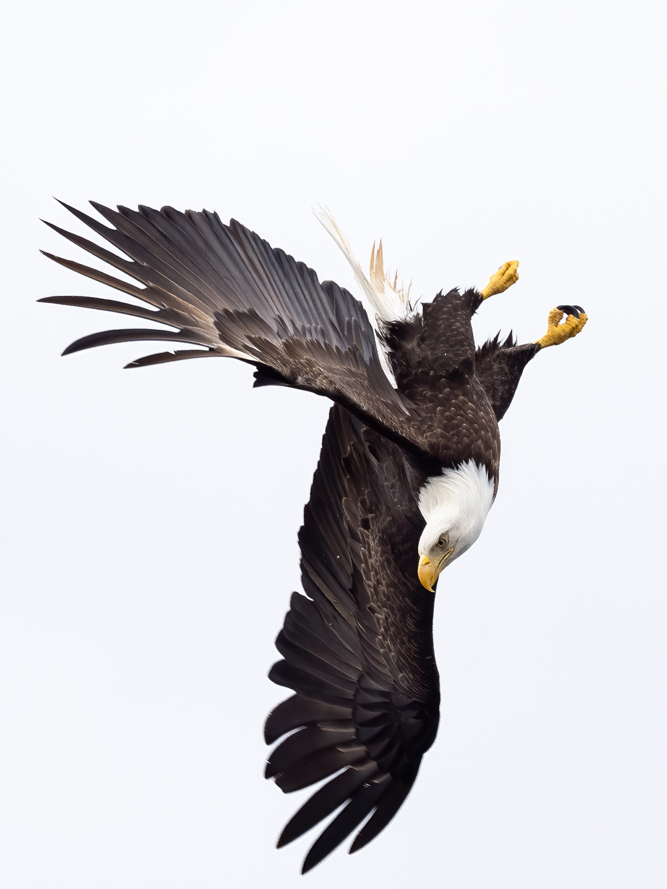
A throng of bald eagles follow the fishing fleet. As the boats net herring in the narrow passages, the eagles sally forth from the tree-lined hills to nab stunned and injured fish that manage to escape the nets only to find themselves in the talons of the voracious eagles. In other locations eagles and gulls line the shore to feast on spawning fish in shallow water or to grab those unlucky fish trapped in rock cracks and tidepools as the tide dropped.
While photographing the fleet and its attendant eagles I spotted a bird that my brain wrote off as an immature eagle—brown and white and speckled. I’m not overly fond of shooting the immature birds as the adults are so much more iconic. But I shot this one anyway. All of the sudden I realized that this was no ordinary bald eagle, but a leucistic bird with a genetic condition that gave it a salt-and-pepper appearance. To me, it was spectacular and fortunately my OM System OM1 nailed it on the first pass. Then It disappeared only to be found perched the next day. I had seen other leucistic birds before—robins and juncos at my birdfeeders, but never a bird as big and amazing as “Speckles.”
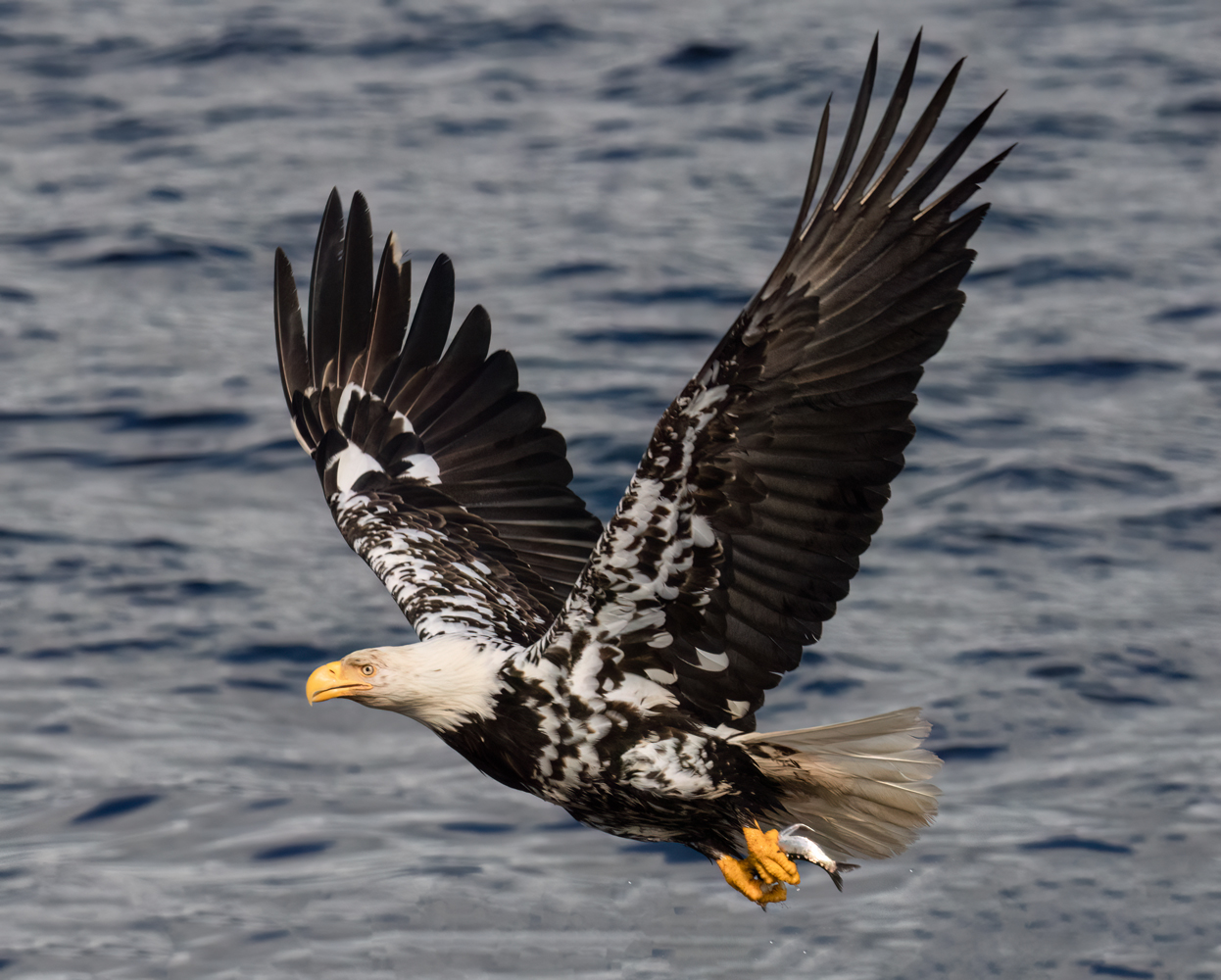
This year I didn’t try to count the number of whale bubble-nets we saw and photographed—but it was a lot, close to one hundred. We saw nine breaches—about usual for this time of year. Our trips in June and July see many more. What makes me happy is the dedication our groups have for getting the perfect bubble-net and whale “tail” shots, and our excellent boat crew to get us in the right position to make those images of the whales juxtaposed against a rugged Alaska mountain backdrop. It seemed like most people were on deck for every one of those feeding events, and also have that “refreshing” fishy breath of these giant creatures drift over us.

